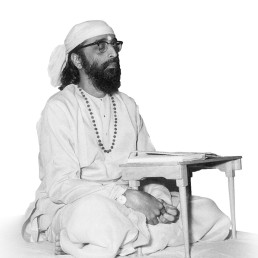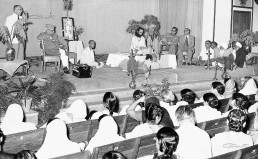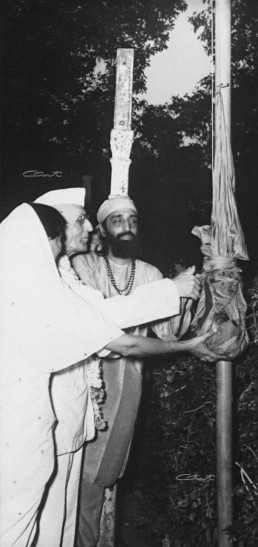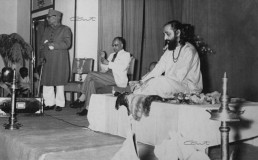
Jnana Yajna 13

Year & Dates:
September 18, 1955 to October 28, 1955

Yajna Topic:
Bhagavad Gita- Chapters 1 & 2

Place:
Modern School, New Delhi, India.
The words, “Gita Yajna ” were on a placard at the gate. A huge, artistically constructed shamiana on the front lawns of the Modern School, Barakhamba Road, New Delhi, stood ready to welcome all seekers. An eminent artist of Delhi had created a strikingly lifelike oil painting of the famed Krishna- Arjuna- Samvaad to serve as the stage’s backdrop. In such a captivating atmosphere, on the evening of September 18,1955, His Holiness Swami Chinmayanandaji of Uttarkashi began His first Gita Jnana Yajna addressing a vast crowd of Delhi’s elite thinkers. In an incredibly methodical way, He summarized the story of Mahabharata and highlighted the way Bhagavad Gita was the essence of the Upanishads made directly relevant and practically applicable to a seeker in distress.
Gita’s Glory Unveiled
Describing Chapter 1 as the case history of the typical Arjuna-disease, Pujya Gurudev made the audience reflect deeply on the anxiety-ridden, shattered personality which results from confusion regarding duties in life. Then, as He uncovered the wealth of philosophy contained in the second chapter of the Gita, the “extremely efficient Krishna-cure for the soul-killing Arjuna disease” was awe-inspiring. Every word that Pujya Gurudev uttered during those enlightening discourses were published in ‘Tyagi,’ a fortnightly magazine that was first launched on September 1, 1955. The non-sectarian, non-denominational spiritual magazine which also carried philosophical articles by other writers, had the sole rights to imprint the message of Gita in the world psyche in a never-before experienced way. Word-by-word, verse-by-verse, the most sublime and yet practical song of Bhagavan was shared from that Yajna Shala in Delhi. A matchless Gitacharya reintroduced Bhagavad Gita in a historic manner.
In Admiration
Shri Panna Lal Sen Gupta, who accidentally found himself at Pujya Gurudev’s Gita Jnana Yajna recounts: Before this I had heard discourses on Gita here and there and I had also tried to understand it by reading commentaries. But that did not unfold to me the inner meaning and potentialities of its shlokas. Swamiji’s inimitable way of speaking and clear exposition of shlokas struck me with wonder. It has been possible for me to realize from these Yajnas that by practicing the teachings of Gita, faithfully and scrupulously, one can certainly enlighten himself to the ultimate supreme Reality.

“Think,” Says Pujya Gurudev
The Gita Sankalpa Vakya is a beautiful statement of pregnant words conveying a wealth of detail regarding the very text-book. Srimad Bhagavad Gita has been considered here as Upanishad. Nay, each chapter in the Gita is considered as an Upanishad, and among the eighteen Upanishads, together constituting the Divine Song, here we end the First of them, entitled “the Yoga of Arjuna’s Despondency,” These chapters are called Upanishads because these are declarations concealing such deep significance that a hasty reader will miss their full import unless he gives long and intense meditation over this suggestive wealth of meaning that lie concealed behind the simple looking stanzas of the Gita. Just as in the Upanishads, here also we need the help of a sympathetic teacher who can train us in the art of opening the seven-hundred lockers in the treasure chamber of the Gita.
From Tyagi Magazine- Nov. 11, 1955, P. 25
Thus standing between the two forces, the good and the bad, arrayed for a battle to death, Arjuna surrendered completely, to the Lord, the subtler discriminative intellect, the charioteer, who held the five senses back and halted the body in a perfect stand-still. The stunned and confused ego-Arjuna-when it totally surrenders to Krishna, the Lord with a smile reassures the Jiva of its final victory, and declares the entire message of spiritual redemption, the Gita.
From Tyagi Magazine- Nov 15, 1955, P. 32
The Source of Sorrow
Explore the Bhagavad Gita’s timeless wisdom as Lord Krishna dispels Arjuna’s unnecessary grief. Understand why wise individuals don’t mourn for the departed or the living and embrace the transformative teachings that bring solace and understanding.


